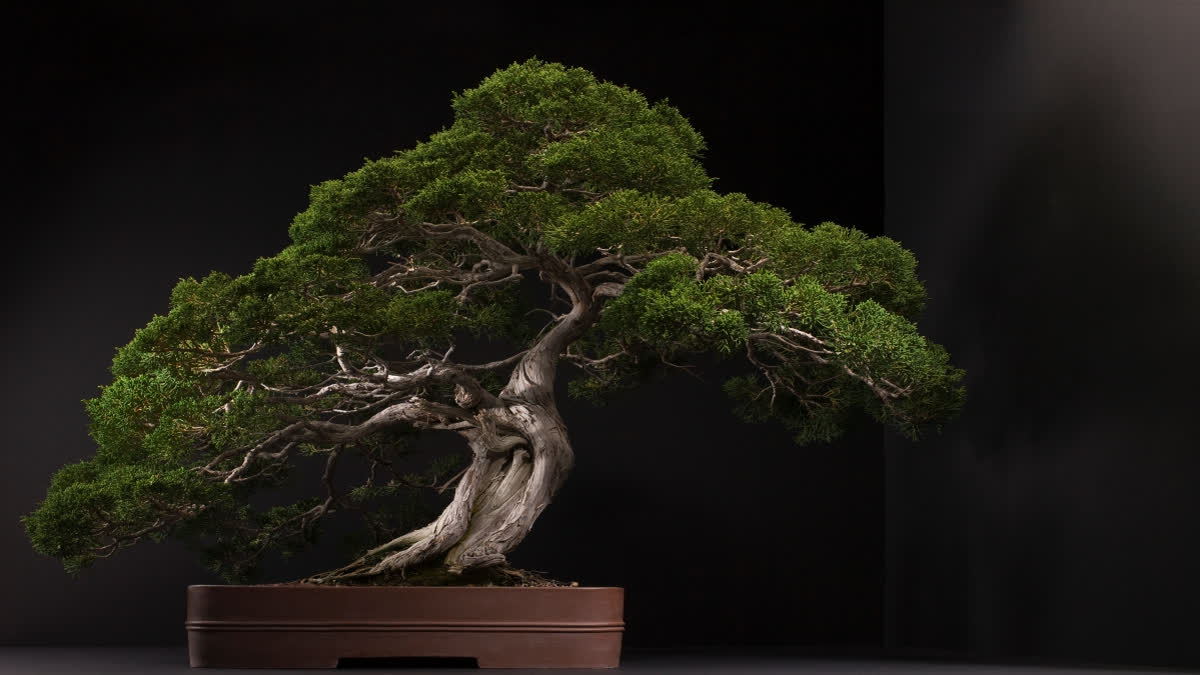Hyderabad: World Bonsai Day is celebrated every year on May 14 to honour the art of bonsai and the memory of Saburo Kato. He was a bonsai master who played a significant role in promoting international peace and friendship through this art form. The World Bonsai Friendship Federation (WBFF) established World Bonsai Day in 2010.
Bonsai trees symbolise harmony and balance in Japanese culture, reflecting the beauty of nature in a small, controlled environment. They require patience and dedication to create and maintain their unique miniature forms. Throughout his life, Bonsai Master Saburo Kato (1915-2008) walked the path of peace and friendship, always helping others understand the true meaning of bonsai. Like the Buddhist monks, who centuries ago spread the art of bonsai from China to Japan and other countries, Saburo Kato realised that bonsai fosters compassion and brings about a deep respect for life.
Facts about the ancient Bonsai Tree:
Bonsai is an ancient Japanese art form that uses horticulture methods and techniques to produce small trees in containers that take the shape and scale of full-size trees over time. The word 'Bonsai' literally translates to 'planted in a container'. A bonsai tree is grown from the same seed as a tree of the same species out in nature. They're genetically the same, they're only small in size because that's how we want them to be. So, by constricting the root growth to a small container and routinely pruning the foliage, the tree stays small.
While the word bonsai is of Japanese origin, the concept of this art form actually took root in China. Since the Yin and Zhou dynasties nearly 3,000 years ago, people in China have cultivated ornamental plants to imitate natural scenery within gardens – a craft known as 'penjing'. By 700 AD the Chinese had started the art of 'pun-sai' using special techniques to grow dwarf trees in containers.
In the right conditions, a bonsai tree can easily live to over 100 years old. Some can even live for centuries, all the way up to a thousand years.
It is often thought that Bonsai is a species of tree. This is not true. In fact, bonsai is a method of growing trees which aims to create an image of a large mature tree but in miniature. So, you can create a bonsai Oak tree for example, by taking an existing Oak tree and styling it as a bonsai.
The Ficus retusa bonsai, known as the 'Brooklyn Botanic Garden bonsai,' is estimated to be over 1,000 years old. It has been carefully nurtured and preserved, surviving through many generations. Some bonsai trees can bear fruits and flowers.
One popular bonsai style, called 'landscape planting,' recreates a miniature version of a natural landscape, including mountains, forests, and rivers. This style captures the beauty of nature and provides a sense of serenity and tranquillity. There are bonsai exhibitions held around the world. These exhibitions celebrate the artistry and skill behind the cultivation and care of bonsai trees. While bonsai requires some specialised care, it is not necessarily more difficult to maintain than other potted plants. Regular watering, pruning, and attention to soil and light conditions are crucial for the health of a bonsai tree.
Why Bonsai is so popular?
The bonsai tree is truly a form of art, it combines art and nature to bring serenity and beauty to its enthusiasts. So, Bonsai trees are living sculptures that make a perfect gift for someone special. Bonsai trees are symbols of beauty and strength, conveying qualities such as harmony, serenity, patience, and elegance. They represent the idea of a perfect balance between nature and art, representing how people can attain peace within themselves.
It is said that those who receive a bonsai tree from a loved one should expect to receive an abundance of good luck and success. Unfortunately, when it comes to vastu, the bonsai plants are associated with the risk of bad luck. Some cultures believe that trimming and shaping these miniature trees can disrupt the natural flow of energy. To mitigate this, consider placing bonsai trees in areas of your home where they won't be the central focus, allowing the energy to flow freely.
Bonsai Tree Style and Techniques:
Bonsai enthusiasts employ different techniques to achieve different styles, such as formal upright, slanting, semi-cascade, Juniper Bonsai, Chokkan, Bonsai trunk, Cascade bonsai style, Hokidachi style, Windswept, Literati bonsai style, Slanting or shakan bonsai, and literati. Bonsai trees are not genetically modified, it's uses cultivation techniques such as pruning, root reduction, potting, defoliation, and grafting to create small trees that mimic the shape and style of mature, full-sized trees.
Wiring is a very important technique used to train and style Bonsai trees. By wrapping wire around the branches of a tree you can bend and reposition the branches to your liking.


